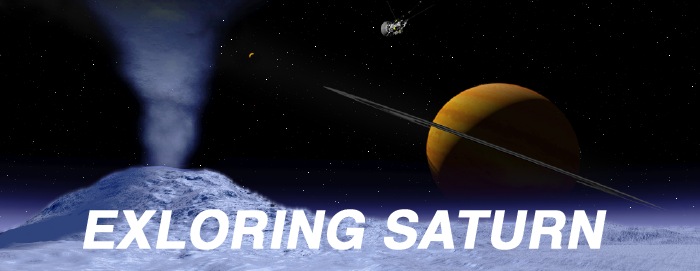 |
|||||||
| One of the Most Complex and Ambitious Ventures in the History of Space Exploration | |||||||
| Saturn | Rings | Moons | Titan | Cassini | Science | Huygens | Resources |
THE LATEST CASSINI NEWS FROM SATURN »»
SOME IMPORTANT CASSINI FINDINGS SO FAR »»
The complex interplanetary probe named Cassini, on a seven-year journey to the planet Saturn, and its moon Titan, is a cooperative endeavor of the U.S. National Aeronautics and Space Administration (NASA), the European Space Agency (ESA) and the Italian Space Agency (Agenzia Spaziale Italiana).
Cassini is a large and sophisticated craft equipped with twelve scientific experiments. It arrived in orbit around Saturn in July 2004. Cassini will send back detailed scientific reports about the Saturnian system for at least four years.
A smaller ESA probe, named Huygens, was attached to Cassini. It parachuted into Titan's thick atmosphere carrying another six scientific instrument packages. Huygens landed on Titan on January 14, 2005.
When it was launched from the United States on a Titan-Centaur rocket in 1997, Cassini was said to be the most ambitious and far-reaching planetary exploration ever mounted.
Is Cassini a dinosaur? Cassini is a holdover from NASA's earlier mega-mission philosophy of deep-space exploration. It's been called the last big-budget, big-mission planetary probe.
Cassini stands more than two stories tall. It weighs more than six tons. At $3.4 billion, its budget dwarfs the recent Mars Pathfinder, Mars Global Surveyor and Mars Exploration Rover missions. NASA's recent "smaller, faster, cheaper" approach may classify Cassini as a dinosaur.
Like its famous ancestors – Viking, Voyager, Galileo – Cassini's mission is ambitious. It is carrying eighteen complex science instruments some 2.2 billion miles for a decade. After arriving there, Cassini dropped the Huygens probe on the surface of Titan, the largest of Saturn's numerous moons.
Nearly died on the vine. In fact, without NASA's emphasis in the 1990s on international cooperation in space exploration, Cassini would have been cut from the space agency's budget. As a result, the Huygens probe was built by the European Space Agency, which also helped fund the overall project. Equipment also was provided by the Italian space agency, ASI.
The Cassini mission is delivering a rich scientific return from one of the most diverse neighborhoods in our Solar System. Cassini provides an opportunity to gain insights into questions of the origin of the Solar System and even the beginning of life.
| Top of this page | Saturn main page | The Planet | The Rings | The Moons | Solar System |
| Cassini probe | Cassini Science | Titan moon | Huygens | Internet Resources | |
| STO Cover | Search STO | Questions | Copyright 2005 Space Today Online | ||